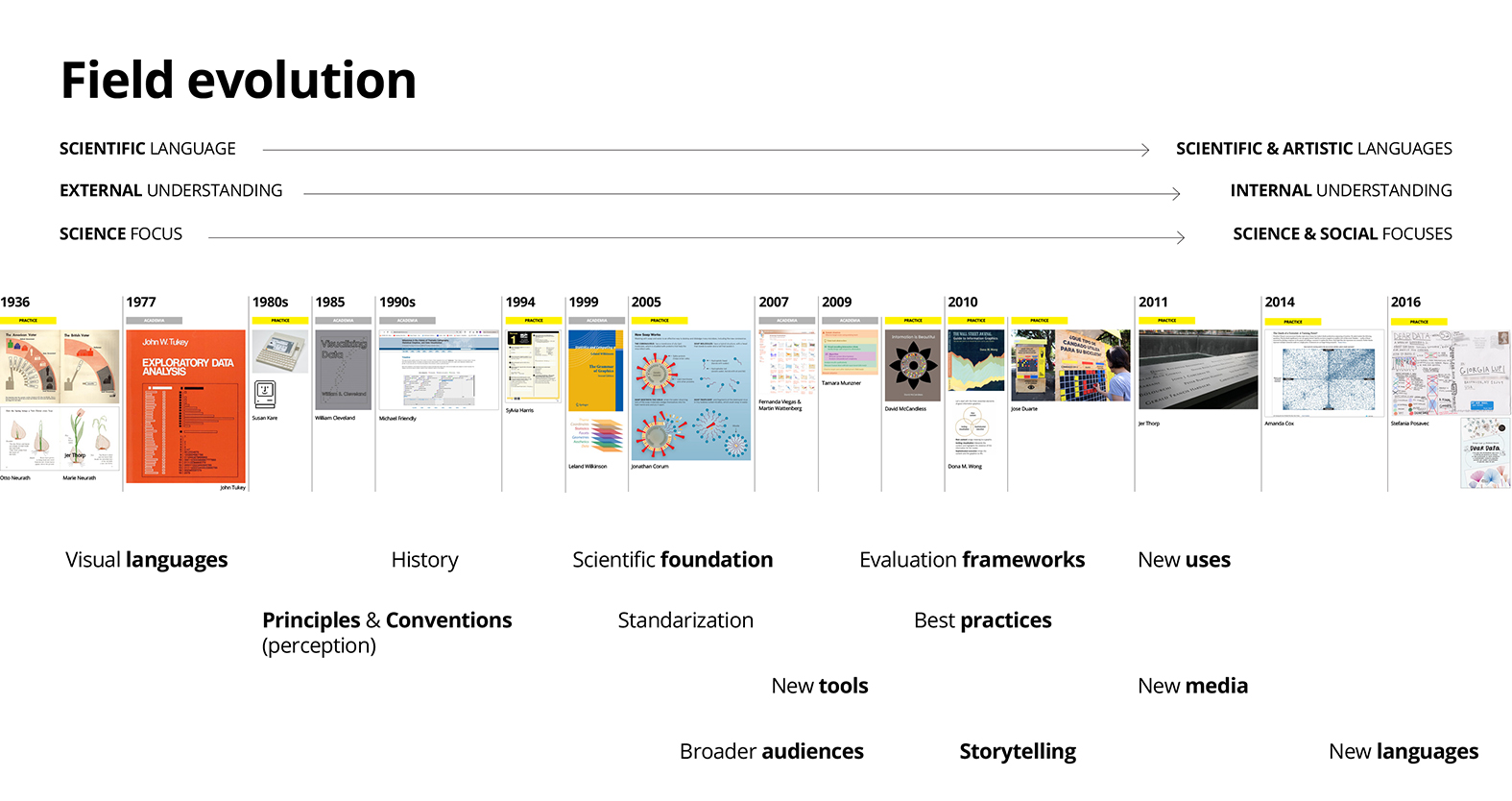Gaining familiarity with the origins and tracing the roots of a practice helps understand its evolution, current state, ongoing issues, and possible future paths. What we know today as information design is the result of a long process and the interaction of multiple forces. Understanding how and why information design came to be starts with a closer look at the influential figures and contributors, seminal theories, notable principles and tools, and key dates. However, often students struggle to engage with theoretical or lecture driven approaches that are traditional used to cover this content.
To address this challenge, I created “Information Design Profile Conversations,” an interactive, reflective activity combining research, presentation, and role play to guide students in learning about the origins of information design. The goal is to expose students to the variety of the practice while showing when, by whom, and from where theories, principles, and trends originated, as well as to critically think about their work and viewpoints. The activity involves a list of 16 people that have been influential (Image 1 above) to the evolution of information design through either academic or industry-driven contributions, grouped into eight pairs of contrasting styles, time periods, and backgrounds. The structure of the activity is as follows:
- Assign: Randomly assign one influential figure to each student.
- Research & Present: Each student, individually, researches and prepares a 5-7 minute presentation, covering (a) Who the person is/was, and (b) An overview of their work, highlighting main contribution to information design.
- Compare & Contrast: Engage in a 10-min conversation with the other figure that illustrates “What would they say about each other’s work?” The dialogue should be spontaneous and reflect the contributor’s approach and view of the practice. Students have to role play, and compare and contrast work styles and views.
- Discuss: Group analysis and discussion focused on understanding each person’s contribution in the social, economic, scientific, and technological contexts.
To facilitate the group part of the activity, I provide a visual, chronological analysis (Image 2 above) of each influential figure, articulating milestones and contributions. As the course advances, I visualize connections between contributors and reveal how each one has been an important piece in the puzzle for developing the practice.
Overall, the activity is a fun and interactive way to cover historical content. It is also very successful in helping students gain a deeper understanding of the origins of information design theories, principles, and concepts, and in placing them in the bigger context.
These are three areas where to pay special attention to maximize results:
Tailor contributors’ list. Avoid creating the list with names of only trendy designers, only academics, or only modern designers. Diversity is essential. Tailoring the list to students’ needs and backgrounds was important to help them make connections with content covered in other courses.
Role play is harder than it looks: Provide extra guidance for the conversations part of the activity to obtain insightful dialogues; encourage spontaneity and debate. For that, students need to analyze and familiarize themselves with the work and views of assigned contributors. Role play practice with another topic is also beneficial.
Time leads to richer discussion. Originally, I allocated one hour for the whole activity, but this was not enough – many times, we had to stop in the middle of a great discussion because class time was over! More time would help students engage in deeper critical thinking and connections making.


Leave a Reply